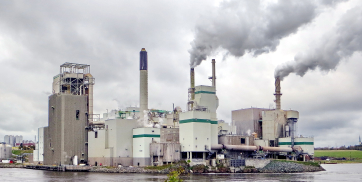With oil and gas methane research continuing to gain momentum, we’ve had the pleasure and challenge of selecting the most impactful research. Here we summarize the latest in methane measurement, technology testing, quantification, and previously unrecognized emission sources.
Review of 237 Oil and Gas Methane Research Publications
Aiming to benchmark current knowledge and provide insight on future research, a scoping review documents and synthesizes research on onshore oil and gas methane measurement research. The authors documented the following themes:
- An upward trend in methane research, with 98% of articles published from 2012-2022.
- Most articles were U.S. based with other countries under-represented.
- Most articles measured at site or region/basin levels.
- The most common emissions sources identified are well pads, compressors, tanks, unlit flares, and gas plants.
- Most articles acquired snapshot measurements without temporal variability.
- Emissions profiles were consistently heavy-tailed.
- Bottom-up inventories consistently under-estimate compared to top-down measurements.
The authors conclude that future research focus on under-represented regions & sources, identifying root causes & linking measurements to mitigation, and multi-level emissions integration here.
Measurement-Informed Inventory for US Oil and Gas Methane Emissions
1540 ground-based facility-level methane emissions measurements are compiled and analyzed. By integrating spatial oil and gas data, a national methane emissions inventory with 10 km by 10 km resolution is constructed (available here). The authors’ measurement-based national oil and gas emissions inventory is reported as ~2 times greater than the EPA Greenhouse Gas Inventory, with a production-normalized methane loss rate of 2.6 %. However, the methane loss rates vary from less than 1% in the gas dominant Appalachian and Haynesville regions to up to 6 % in oil-dominant basins, such as the Permian, Bakken, and Uinta. The authors stress the importance of integrating measurement-based data into inventories, including prioritizing research on development of statistical methods, here.
Integration of Plume-Detection and Area-Scale Estimation of Methane
A theoretical framework to relate plume and area estimates of dense point source methane emission fields is presented. Using their method, the authors show a robust linear relationship is shown between summed methane plume data and satellite area inversion estimates in the Permian Basin. Some of the findings shared include:
- The spatial footprint size of plume-detecting instruments impacts the emission rate distribution of plumes.
- Plume datasets obtained from aircraft, satellites, and in situ instruments can evaluate and improve area estimates of dense point source emission fields.
- Informing area estimates with space-borne plume detectors should be possible.
The authors recommend future research to expand their approach to a broader spectrum of methane source sectors and other trace gases (CO2, CO, NO2) observed at different spatial scales here.
Identification and Quantification of North American Super-Emitters with Chinese Hyperspectral Satellites
A detailed survey of methane super-emitters across Marcellus Shale US, Haynesville/Bossier Shale US, Permian Delaware Tight US, and Montney is conducted using Gaofen5-01A/02 (GF5-01A/02) satellite measurements from 2022-2023. 48 extreme methane point-source emissions are detected, with flux rates of 646 to 16,071 kg/h. These sources are responsible for approximately 30% of the total flux in sampled regions, revealing a heavy-tailed emissions distribution from oil and gas infrastructure. The authors state their upscaling estimates from point-source observations closely align with atmospheric inversion results, underscoring the value of satellite spectroscopy in enhancing bottom-up inventories, refining regional methane estimates, and reducing uncertainties. They suggest that integrating bottom-up data with satellite data can provide a better understanding of methane emissions here.
Satellite Quantification of Venezuelan Methane Emissions
TROPOspheric Monitoring Instrument (TROPOMI) data is used to quantify methane emissions in Venezuela for 2018-2020, including the notoriously difficult to observe Lake Maracaibo region. Approximately half of Venezuelan methane emissions can be informed by TROPOMI observations, and emissions from oil exploitation are estimated to be ∼1.6 higher than in bottom-up inventories. The authors find that, even with decreasing production from 2018-2020, methane emissions in the Lake Maracaibo region changed little, and estimate a production methane intensity of 20% for the region. They suggest that this high emissions intensity could be due to abandoned infrastructure here.
Bottom-Up Methane Emission Estimates for the Denver-Julesburg Basin
2022 methane emissions for all sectors in the Denver-Julesburg basin are estimated using 3 bottom-up approaches:
- 358,000 tonnes total methane emissions (all sectors) and 0.84% methane intensity in the energy sector are estimated using IPCC emission factors.
- 269,000 tonnes total methane emissions (all sectors) and 0.44% methane intensity in the energy sector are estimated using an EPA-based approach.
- 212,000 tonnes total methane emissions (all sectors) and 0.22% methane intensity in the energy sector are estimated using region specific measurement informed emission factors.
The authors suggest that production related emissions reductions could be significantly due to regulations implemented by the CDPHE. However, they caution that regional measurements should be made to ensure these bottom-up calculations are realistic here.
Quantification of Small Methane Emission Sources in the Continental US
A 2021 facility level model for the continental US is compiled using empirical measurements with low detection limits. The authors report that small sources are disproportionately responsible for the majority of oil and gas methane emissions in the US, suggesting 70% of continental oil and gas methane emissions may be from facilities emitting less than 100 kg/hr. Asserting that their results are in broad agreement with those from independent aerial/satellite remote sensing estimates, the authors emphasize the need for multi scale approaches and characterization of the large contribution from small emission sources here.
Detailed Emissions Measurements at Natural Gas Liquefication Terminals
The first measurement-informed emissions intensities are provided for US liquefaction terminals. Multiscale, periodic measurements of methane and carbon dioxide emissions are conducted at two U.S. LNG terminals over a 16-month campaign. Normalized to LNG production, methane emissions intensity varied from 0.007% to 0.045%. Carbon dioxide was found to account for over 95% of total greenhouse gas emissions, and the authors conclude that GHGRP-reporting provides reasonably accurate estimates of total GHG emissions at liquefaction terminals here.
Aerial Quantification of CHOPS Methane Emissions in Alberta and Saskatchewan
Total methane emissions for 10 well clusters (22-167 well sites each) of Cold Heavy Oil Production with Sand Extraction (CHOPS) are quantified. The 2018 aerial surveys in Alberta and Saskatchewan utilize mass balance algorithms incorporating wind data. The authors derive measurement informed emissions factors (EF) for these wells, with an average emission factor of 70.4 kg CH4/m3 produced oil for the Alberta wells and 55.1 kg CH4/m3 produced oil for the Saskatchewan wells. The Saskatchewan CHOPS emissions are estimated to be 121% higher than reported to Canada’s National Inventory Report. The authors additionally observe that non-piped CHOPS wells emit up to eight times more methane than piped wells, recommending conversion of non-piped CHOPS wells as a mitigation opportunity here.
Natural Gas Heaters Could be an Overlooked Methane Emissions Source in B.C.
In-situ FTIR measurements of exhaust streams are made for 38 catalytic heaters at upstream production sites in British Columbia, Canada. Average methane destruction efficiencies of 61% are reported and the authors comment that draft federal regulations require at least 85% efficiency for catalytic destruction. Analysis within this work suggests these catalytic heaters could be responsible for 6% of BC’s upstream methane emissions. 2 primary reasons this methane source is previously hidden/neglected are suggested:
- Due to being mixed with hot exhaust gases, commonly used OGI cameras can not differentiate between a heater emitting methane or one where complete combustion is occurring.
- Due to seasonal use during cold months, methane emissions from catalytic heaters will be missed by top-down measurement campaigns occurring during warmer months.
The authors recommend alternative heating solutions, with either electric heat or central heating systems. They estimate that a central heating system could reduce this particular emissions source by ~425 times here.
Testing Continuous Methane Monitoring Technology with High-Volume Emissions
Continuous monitoring technologies from Ecotec, Project Canary, Qube, Sensirion, ChampionX, Andium, Kuva, and Oiler are evaluated over a 45-day testing period. This single blind testing included larger emissions from a single source greater than 1600 kg/hr to simulate super-emitter events. The authors suggest that some of the systems are quite effective at detecting large emissions sources, with some achieving detection rates of over 90%, and are well suited as early warning systems. However, the authors state that quantification performance is poor, with emissions being underestimated on average by 74%. The authors recommend caution when applying the continuous monitoring measurements to measurement-based inventory generation here.
QOGI Methane Quantification Performance
Single-blind experiments are conducted on the FLIR QL320 QOGI system under near-field conditions at an outdoor testing facility. 357 individual measurements are taken across 26 controlled releases and 71 camera positions for release rates between 0.1 kg Ch4/h and 2.9 kg Ch4/h. Aiming to investigate the impact of release rate, plume background, and selected user input data on quantification performance, the authors find the following:
- A quantification error range of −90% to +831% for all measurements.
- A quantification error range of −67% to 200% for 75% of measurements.
- Reduced quantification error with increased release rate.
- Reduced quantification error with low windspeed.
- Reduced quantification error when viewing against a clear sky.
- Viewing range of 2 m to 10 m more favorable for quantification.
- Reliable estimates are more likely by taking the average measurement from more than one camera position.
- Relatively accurate quantification performance is possible without all favorable conditions.
Noting that the same method was used for all positions and all conditions, the authors recognize that controlling the measurement method removed the field crews’ experience and bias from the study design. They recommend further studies to assess the impact of surveyor experience on quantification performance here.





